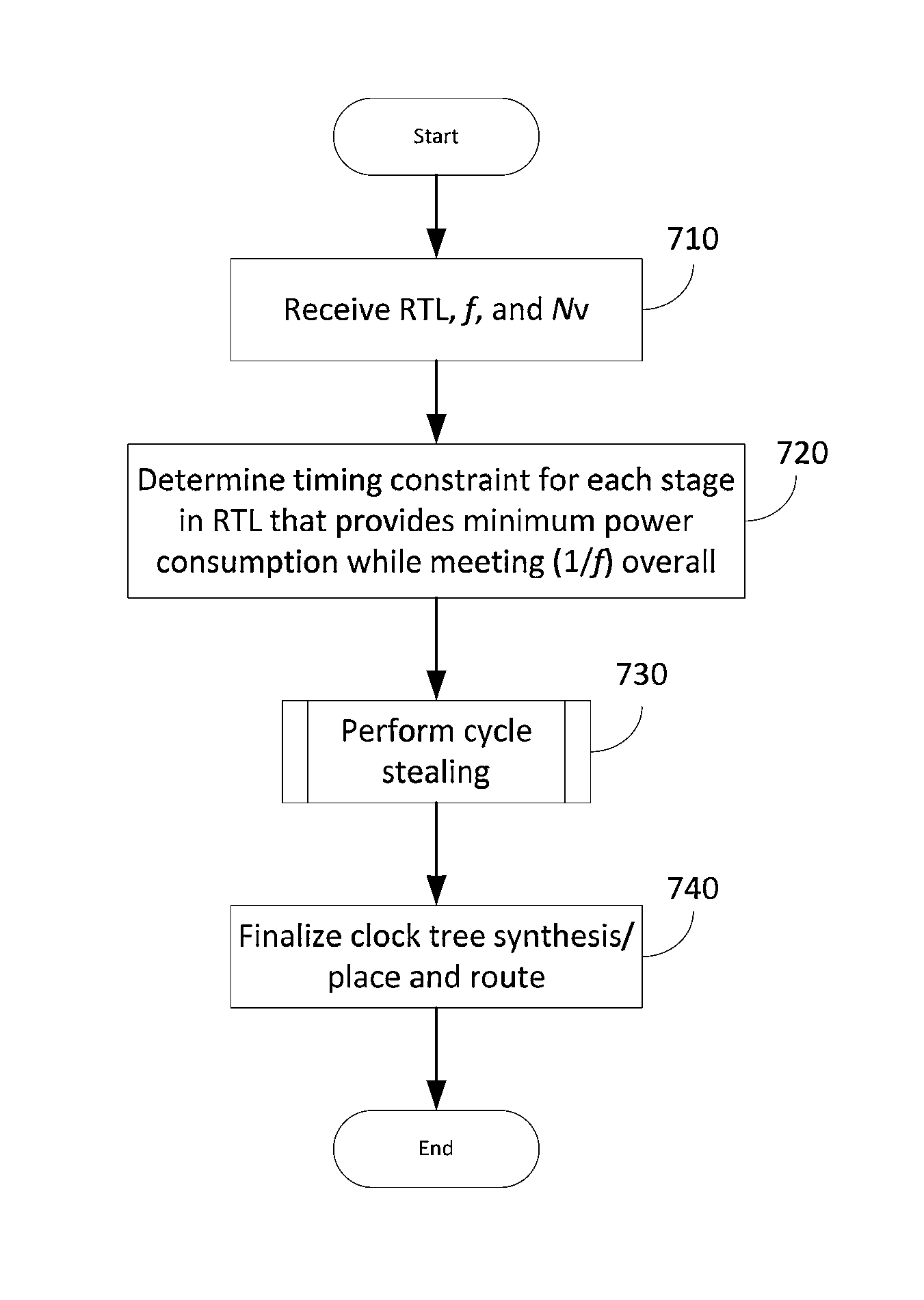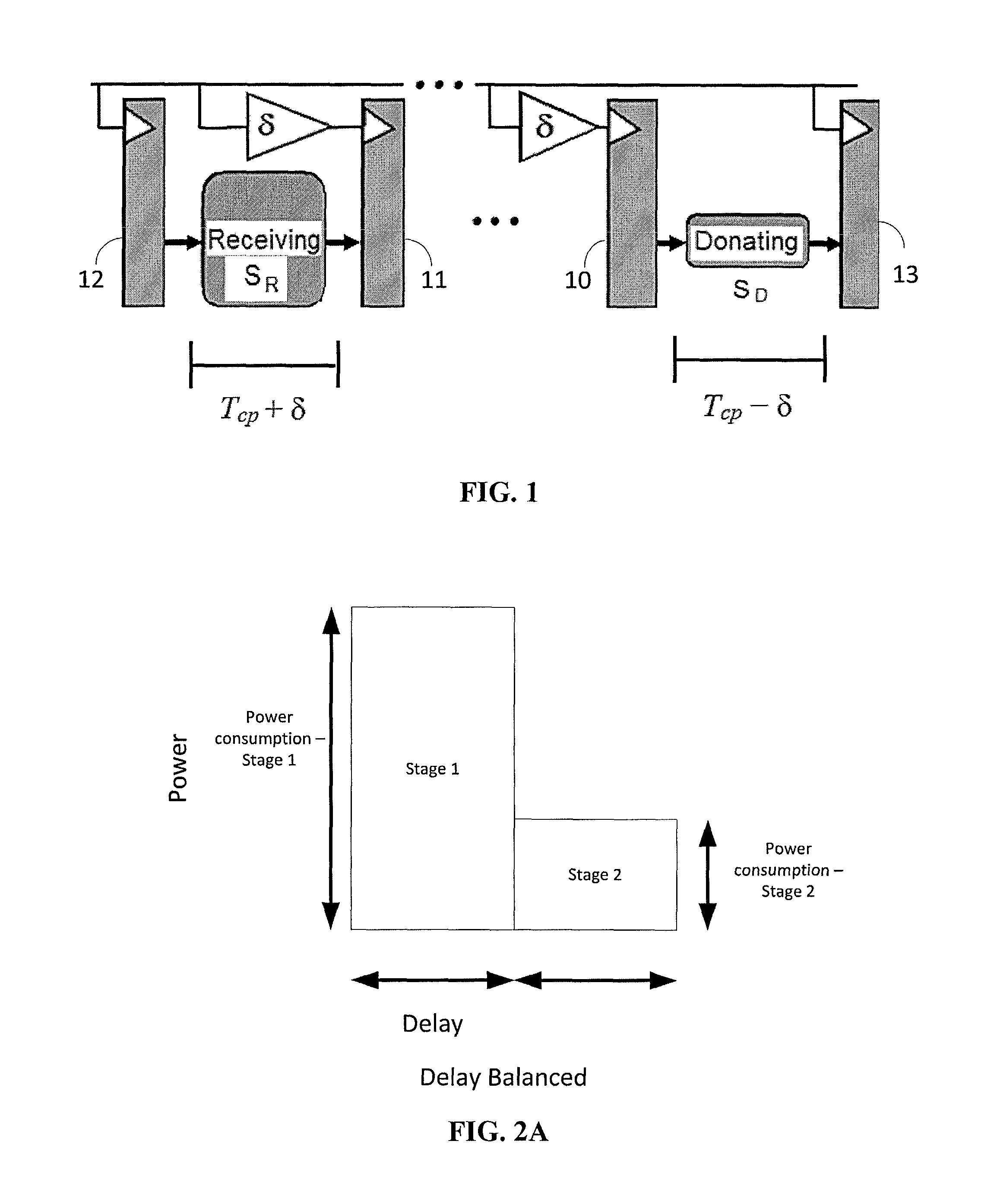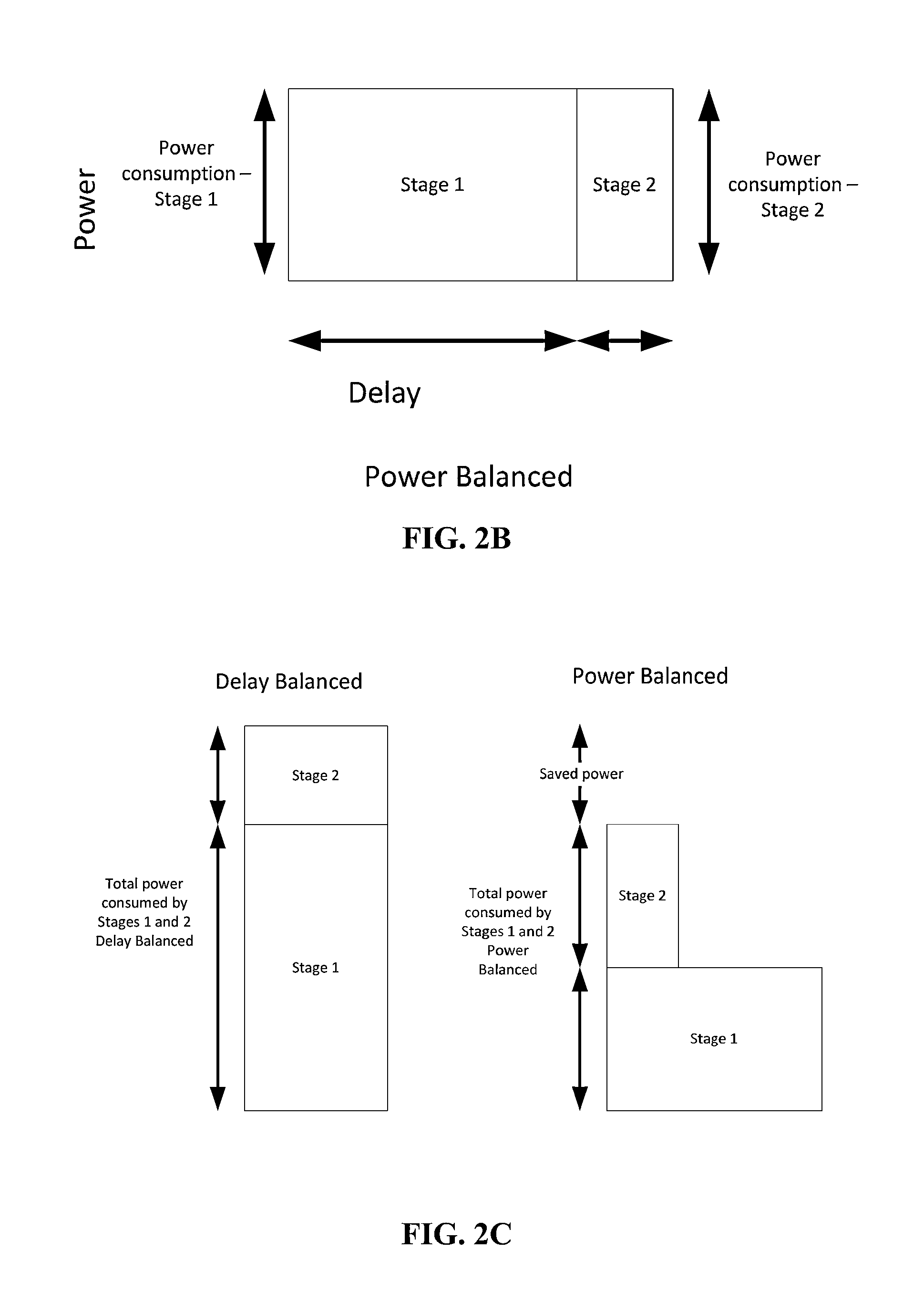Power balanced pipelines
a technology of power balanced pipelines and pipeline stages, applied in the direction of cad circuit design, program control, instruments, etc., can solve the problems of significant imbalance in power consumption of different microarchitecture pipeline stages, significant energy inefficiency in processors, and inefficiency manifesting, so as to reduce power disparity, optimize power efficiency, and maximize frequency
- Summary
- Abstract
- Description
- Claims
- Application Information
AI Technical Summary
Benefits of technology
Problems solved by technology
Method used
Image
Examples
examples
Example: Experimental Setup and Simulations
[0139]The FabScalar framework is used to evaluate power balanced pipelines of embodiments of the invention. FabScalar is a parameterizable, synthesizable processor specification that allows for the generation and simulation of RTL descriptions for arbitrarily configured scalar and superscalar processor architectures. For the evaluations, benchmarks from the Standard Performance Evaluation Corporation (SPEC) benchmark suite (INT, bzip, crafty, gap, mcf, parser, twolf, vortex, FP, ammp, art, equake, swim, wupwise) are executed for 3 billion cycles.
[0140]FIG. 13 shows the average power breakdown (for a workload of SPEC benchmarks) into the stages of the baseline FabScalar pipeline used in the experiment examples. Canonical pipeline states include Fetch, Decode, Rename & Retire, Dispatch, Issue, Register read (RegRead), Execute, and WriteBack / Bypass.
[0141]Floating Point (FP) benchmarks are primarily used to evaluate dynamic power balancing sinc...
PUM
 Login to View More
Login to View More Abstract
Description
Claims
Application Information
 Login to View More
Login to View More - R&D
- Intellectual Property
- Life Sciences
- Materials
- Tech Scout
- Unparalleled Data Quality
- Higher Quality Content
- 60% Fewer Hallucinations
Browse by: Latest US Patents, China's latest patents, Technical Efficacy Thesaurus, Application Domain, Technology Topic, Popular Technical Reports.
© 2025 PatSnap. All rights reserved.Legal|Privacy policy|Modern Slavery Act Transparency Statement|Sitemap|About US| Contact US: help@patsnap.com



